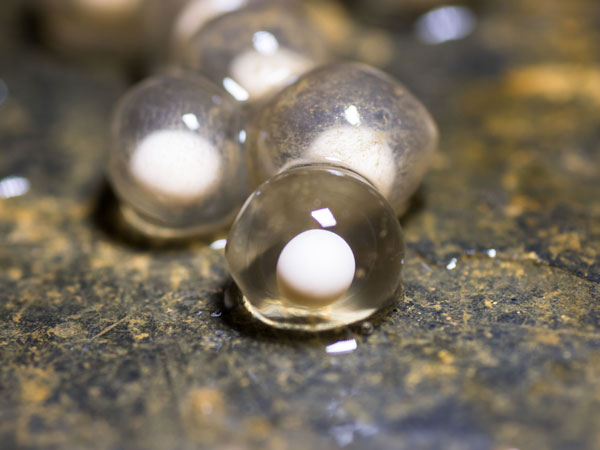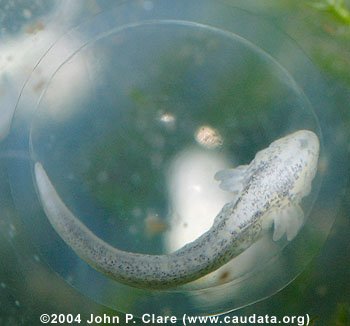Axolotl eggs take around 10 to 14 days to hatch. We will explore the various factors that influence the hatching process of axolotl eggs, including temperature, water quality, and parental care.
We will also discuss the development stages of axolotl embryos and provide tips for successfully hatching and caring for the hatchlings. So, if you’re curious about the timeline of axolotl egg hatching and want to ensure the healthy growth of these fascinating creatures, continue reading!

Credit: axolotlnerd.com
Understanding The Development Of Axolotl Eggs
Axolotl eggs undergo a fascinating development process, from the moment they are laid to hatching. As a unique species, axolotls captivate enthusiasts with their ability to remain in a juvenile form throughout their lives. Understanding their reproductive cycle provides insight into their lifecycle.
Axolotls reproduce through external fertilization, meaning the female lays the eggs and the male releases sperm to fertilize them. These eggs possess a spherical shape and have a jelly-like coating that protects them. The duration of the hatching process depends on various factors, such as temperature and water quality.
Generally, axolotl eggs take approximately 14 to 21 days to hatch. It is essential to maintain optimal conditions for their development, ensuring a healthy and successful hatching process. By comprehending the structure and characteristics of axolotl eggs, enthusiasts can contribute to the preservation of this remarkable species.
The Incubation Period For Axolotl Eggs
The incubation period for axolotl eggs can vary depending on several factors. On average, it takes around 10-14 days for the eggs to hatch. Temperature plays a significant role in the hatching time. Higher temperatures tend to result in faster hatching, while lower temperatures can delay the process.
Optimal conditions for successful hatching include maintaining a temperature of around 18-20 degrees celsius and providing clean, oxygenated water. It’s important to note that there are certain differences between wild and captive breedings when it comes to egg incubation. In the wild, axolotls typically lay their eggs on aquatic plants, while in captivity, they are usually laid on surfaces such as rocks or artificial structures.
Overall, closely monitoring temperature and creating suitable conditions are vital for ensuring successful axolotl egg hatching.
Monitoring Egg Development
Axolotl eggs go through a fascinating journey before hatching into adorable aquatic creatures. Monitoring the development of these eggs is important to ensure their well-being. During incubation, observable changes occur in the eggs, signaling their progress. Visual cues, like the darkening of the embryos, indicate that hatching is imminent.
Understanding the key stages of embryonic development helps in tracking the growth of the eggs. Techniques that enable monitoring without disturbing the eggs include gently rotating them and using specialized lighting to observe internal changes. These methods minimize any potential harm to the developing embryos.
Patience and careful observation are essential during this delicate process. So, whether you’re a new axolotl breeder or a curious enthusiast, monitoring egg development is crucial for a successful hatching.
Caring For Axolotl Eggs During Incubation
Axolotl eggs typically take around 14 to 21 days to hatch. During incubation, it is crucial to provide the eggs with optimal conditions. Maintaining suitable water parameters is essential for their development. This includes monitoring temperature, ph levels, and oxygen levels.
Protecting the eggs from predators and environmental fluctuations is also important. Adequate filtration and keeping the tank secure can prevent disturbances. Proper handling and maintenance of the eggs ensure their viability. Avoid excessive disturbance, but gently remove any debris or unfertilized eggs.
It is essential to be cautious when transferring or adjusting the eggs. By following these guidelines, you can provide the ideal environment for axolotl eggs to hatch successfully.
Hatching Process: From Egg To Larvae
From egg to larvae, the axolotl hatching process is an intriguing transformation. These eggs undergo a step-by-step journey. Initially, they start as tiny embryos, gradually developing into fully-formed larvae. Once hatched, the axolotl larvae exhibit interesting behavior. They eagerly explore their surroundings and exhibit natural instincts.
It’s fascinating to observe these tiny creatures navigate their existence. As they grow, they begin to display unique characteristics and adapt to their environment. Each stage of the hatching process brings new discoveries and insights into the remarkable world of axolotls.
Understanding the timeline from egg to larvae sheds light on this captivating life cycle.
Post-Hatching Care And Development
Axolotl eggs typically take around 10-14 days to hatch, depending on environmental conditions. After hatching, providing adequate care is crucial for the healthy growth of axolotl larvae. Maintaining optimal conditions such as temperature, ph levels, and clean water is essential.
To ensure proper development, a suitable diet rich in small live foods like daphnia, brine shrimp, or bloodworms should be provided. Additionally, social behavior and isolation considerations must be taken into account, as overcrowding can negatively impact their growth. Regularly monitoring growth milestones and development is important to track their progress and detect any potential issues early on.
By following these guidelines, you can support the successful post-hatching care and development of your axolotl larvae.
The Timeframe For Axolotl Egg Hatching
The timeframe for axolotl egg hatching can vary based on several factors. Factors such as temperature, water quality, and genetics can all affect the duration of egg incubation. On average, it takes about 10 to 14 days for axolotl eggs to hatch.
However, there can be variances and exceptions to this hatching time. Some eggs may hatch earlier while others may take longer. It is important to monitor the development of the eggs closely to predict the hatching time. As the eggs develop, you may notice changes in their appearance and size, which can give you an indication of when they are nearing hatching.
By understanding the factors that affect egg incubation and closely observing the development of the eggs, you can have a better idea of how long it will take for axolotl eggs to hatch.
Troubleshooting Hatching Issues
Axolotl eggs generally take around 14 to 28 days to hatch, but troubleshooting hatching issues is crucial. Common problems during the hatching process include egg viability issues. It’s important to identify and address any viability issues promptly. Another problem that may arise is delayed or stalled hatching.
If hatching seems to be taking longer than expected, it’s important to intervene appropriately. Seeking professional help is recommended when necessary, especially if you’re unsure about the health of the eggs or if the hatching process isn’t progressing as it should.
By addressing these common issues, you can increase the chances of successful hatching and ensure the health and well-being of the axolotl eggs.
Frequently Asked Questions On How Long Does It Take For Axolotl Eggs To Hatch
How Long Does It Take For Axolotl Eggs To Hatch?
Axolotl eggs typically take between 10 to 14 days to hatch. During this time, it’s important to maintain the eggs in clean, oxygenated water at a temperature of around 68 to 72 degrees fahrenheit. Parental care is not required, as the adult axolotls may eat the eggs if not separated.
Conclusion
Understanding the fascinating journey of axolotl eggs from laying to hatching is a crucial aspect of breeding these unique creatures. The incubation period of axolotl eggs typically ranges from 14 to 21 days, depending on various factors such as water temperature and egg health.
During this period, it is essential to provide optimal conditions to ensure the successful development of the embryos. Maintaining stable water temperature, providing appropriate nutrition, and avoiding disturbances are key factors in promoting healthy embryo growth. Investing time and effort in ensuring the highest level of care for axolotl eggs will ultimately lead to a higher success rate of hatching.
Remember, patience is key, as the waiting period can sometimes feel extensive. However, the joy that comes from witnessing the hatching of axolotl eggs makes the wait well worth it. So, take the necessary steps and embrace this wonderful and rewarding journey of axolotl hatchlings emerging into the world.
